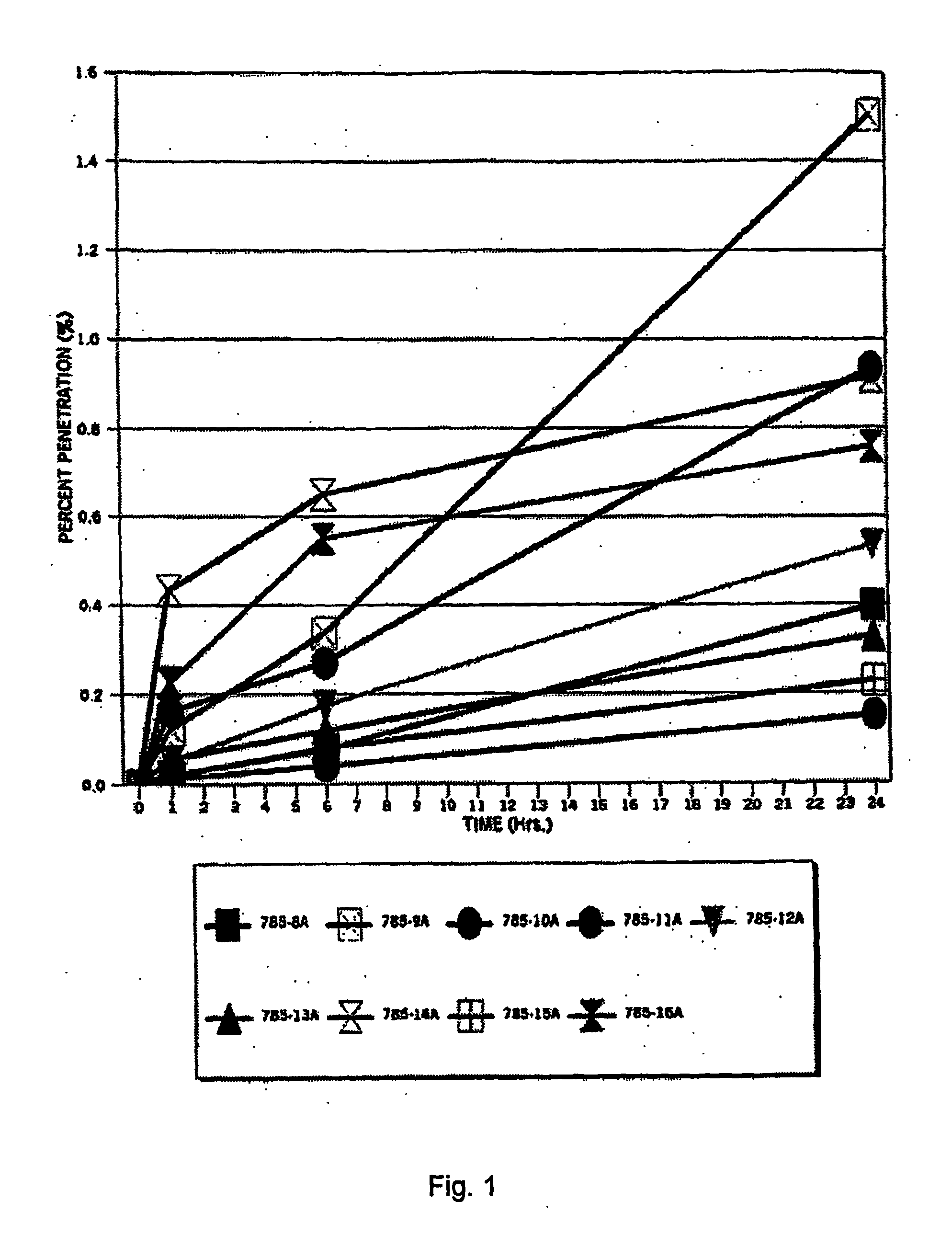Composition And Method For Treating Inflammatory Diseases Using Protease Inhibitors
a technology of protease inhibitors and compositions, applied in the direction of peptide/protein ingredients, immunological disorders, peptide sources, etc., can solve the problems of chronic inflammation and insufficient skin repair, itching or burning sensation, and skin damage to the affected area
- Summary
- Abstract
- Description
- Claims
- Application Information
AI Technical Summary
Benefits of technology
Problems solved by technology
Method used
Image
Examples
example 1
Determination of the Specific Activity of Recombinant Alpha 1-Antitrypsin
[0090]The purpose of this study was the release and stability testing of recombinant alpha 1-antitrypsin (rAAT) in the pharmaceutical composition. This method may also be used as a qualitative identity test for rAAT as an elastase inhibitor in gels, 0.1% to 3.0%, by measuring the inhibitory effect of rAAT on porcine pancreatic elastase (PPE). The assay is performed in a microtiter plate.
[0091]REAGENTS: Tris-HCI: FW 157.6 g / mole, Electerophoresis grade, Fisher Cat# BP153-500. Tris-base: FW 121.1 g / mole, biotechnology performance certified, Sigma Cat# T 6066. Water, HPLC grade. sodium chloride: FW 58.44 g / mole, certified A.C.S, Bovine Serum Albumin (BSA): Fraction V. Protease-free, Golden West, Cat# BA 1060. Porcine Pancreatic Elastase, Grade II Lyophilized, Roche Diagnostic Corp. Cat# 100907. N-Suc-Ala-Ala-Ala-pNA, -Bachem, Cat# I-1385. rAAT Reference Standard, Arriva Pharmaceuticals.
[0092]SOLUTIONS: 100 mM Tris...
example 2
In Vitro Percutaneous Absorption of Antitrypsin in Human Cadaver Skin
[0105]The purpose of this study was to evaluate the in vitro percutaneous absorption of nine topical alpha 1-antitrypsin (0.5%) gel formulations in intact human cadaver skin. The test formulations are applied as a single dose. Transdermal absorption was measured at 1, 6 and 24 hours, epidermal, dermal and stratum corneum (S.C.) recoveries are measured at 24 hours. The experimental design is set forth below in Table 12.
TABLE 12Experimental designDrugEpidermal Dermal%ApplicationReservoirS.C. RecoveryDrugAntitrypsinNVehicle(Hr)Penetration (Hr)(HR)785-8A0.56Gel01, 2424785-9A0.56Gel01, 6, 2424785-10A0.56Gel01, 6, 2424785-11A0.56Gel01, 6, 2424785-12A0.56Gel01, 6, 2424785-13A0.56Gel01, 6, 2424785-14A0.56Gel01, 6, 2424785-15A0.56Gel01, 6, 2424785-16A0.56Gel01, 6, 2424Radiolabeled 125I antitrypsin (100 Ci / ml)(S.A. 53 Ci / mg) was provided by Amersham PLC.
[0106]Human Skin: Human cadaver skin (# 000504) was obtained from a sing...
PUM
| Property | Measurement | Unit |
|---|---|---|
| Temperature | aaaaa | aaaaa |
| Temperature | aaaaa | aaaaa |
| Temperature | aaaaa | aaaaa |
Abstract
Description
Claims
Application Information
 Login to View More
Login to View More - R&D
- Intellectual Property
- Life Sciences
- Materials
- Tech Scout
- Unparalleled Data Quality
- Higher Quality Content
- 60% Fewer Hallucinations
Browse by: Latest US Patents, China's latest patents, Technical Efficacy Thesaurus, Application Domain, Technology Topic, Popular Technical Reports.
© 2025 PatSnap. All rights reserved.Legal|Privacy policy|Modern Slavery Act Transparency Statement|Sitemap|About US| Contact US: help@patsnap.com


